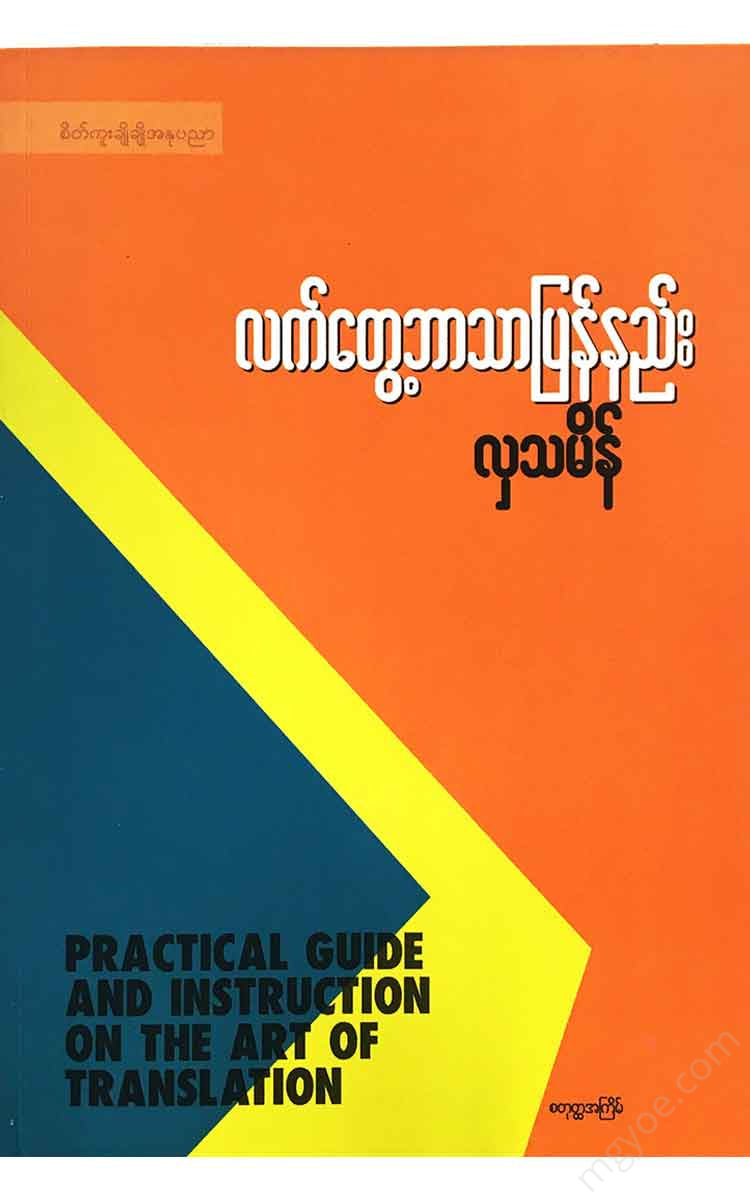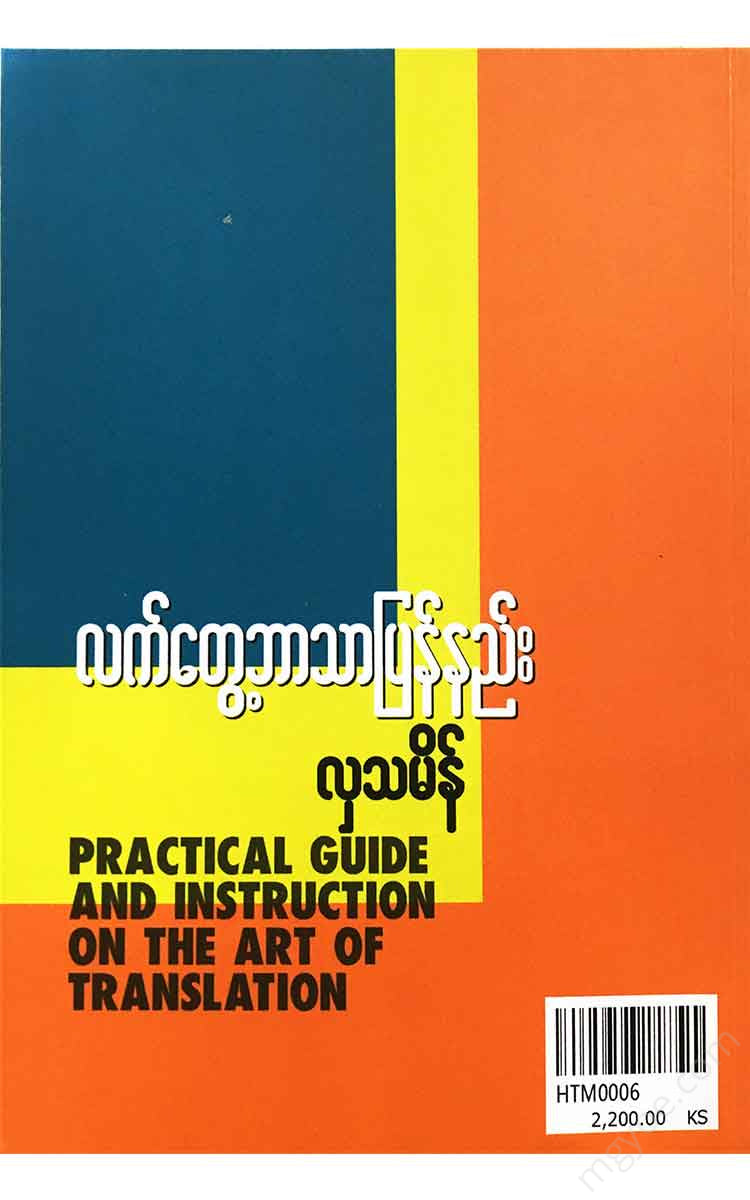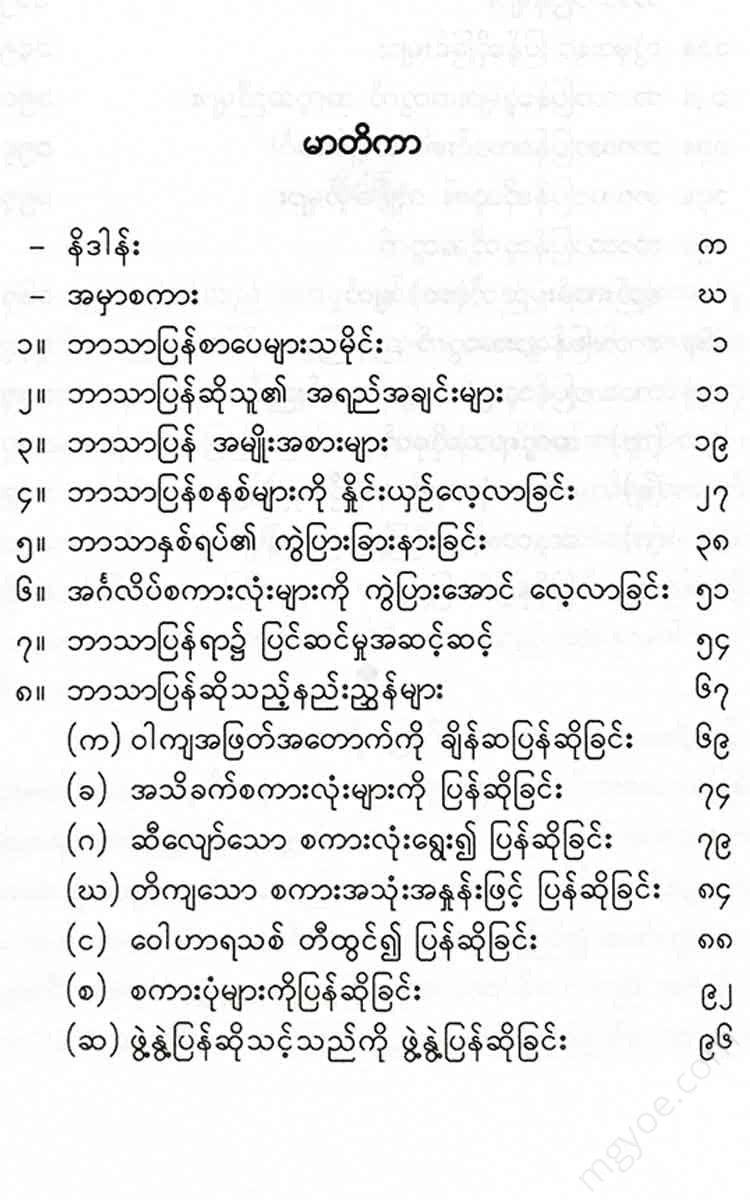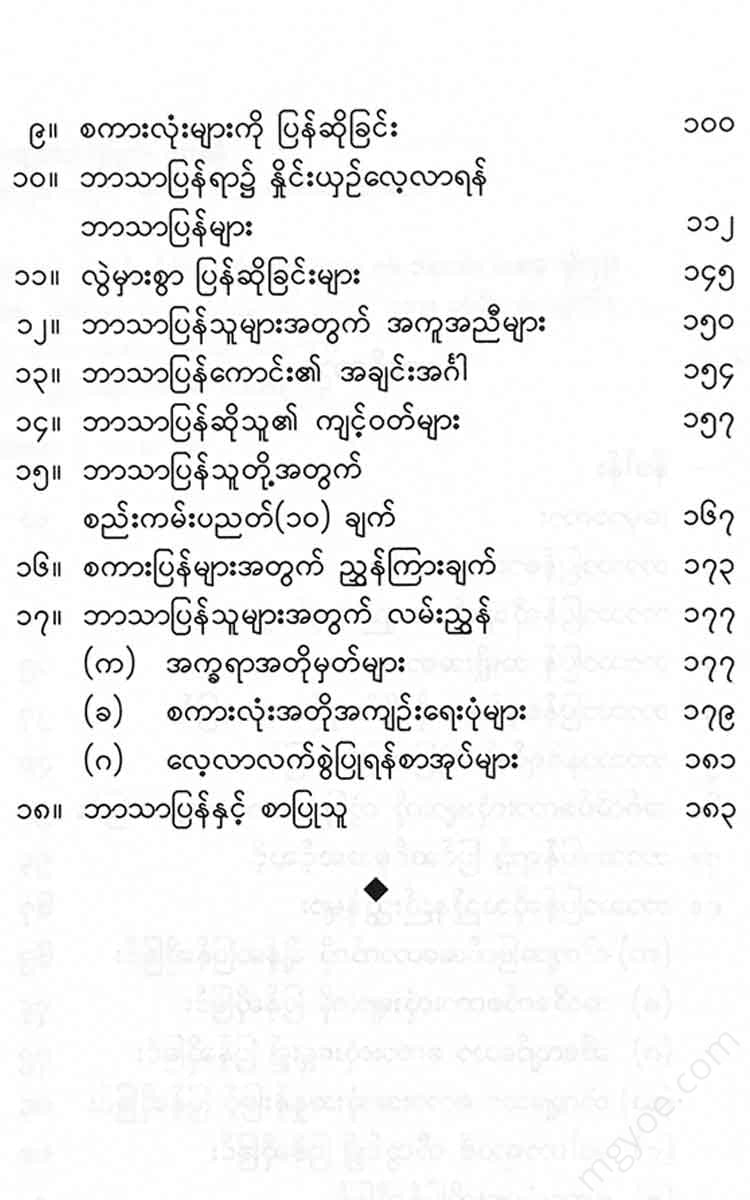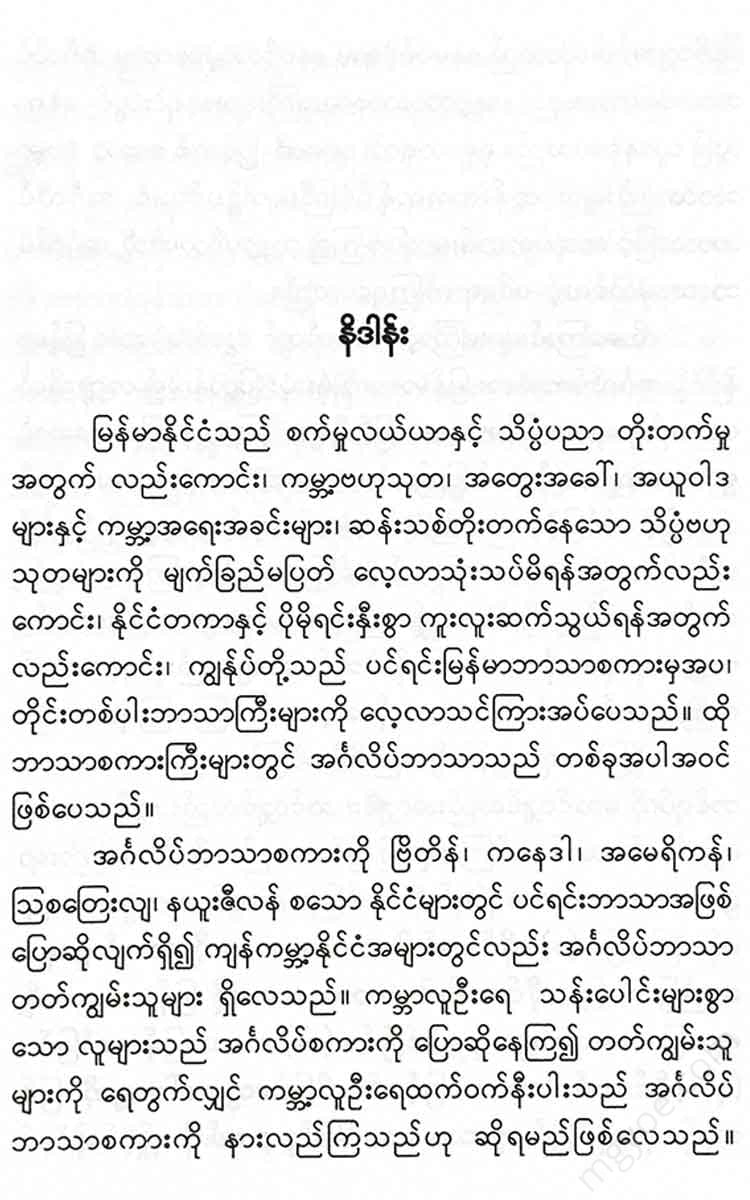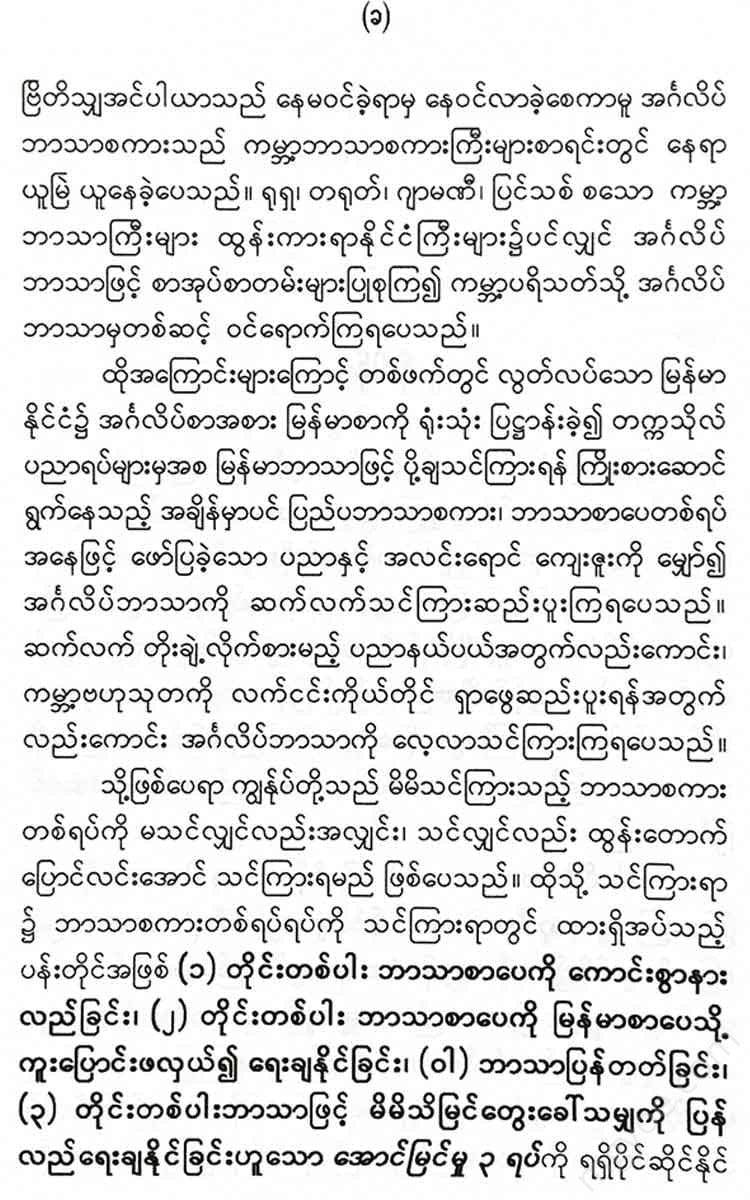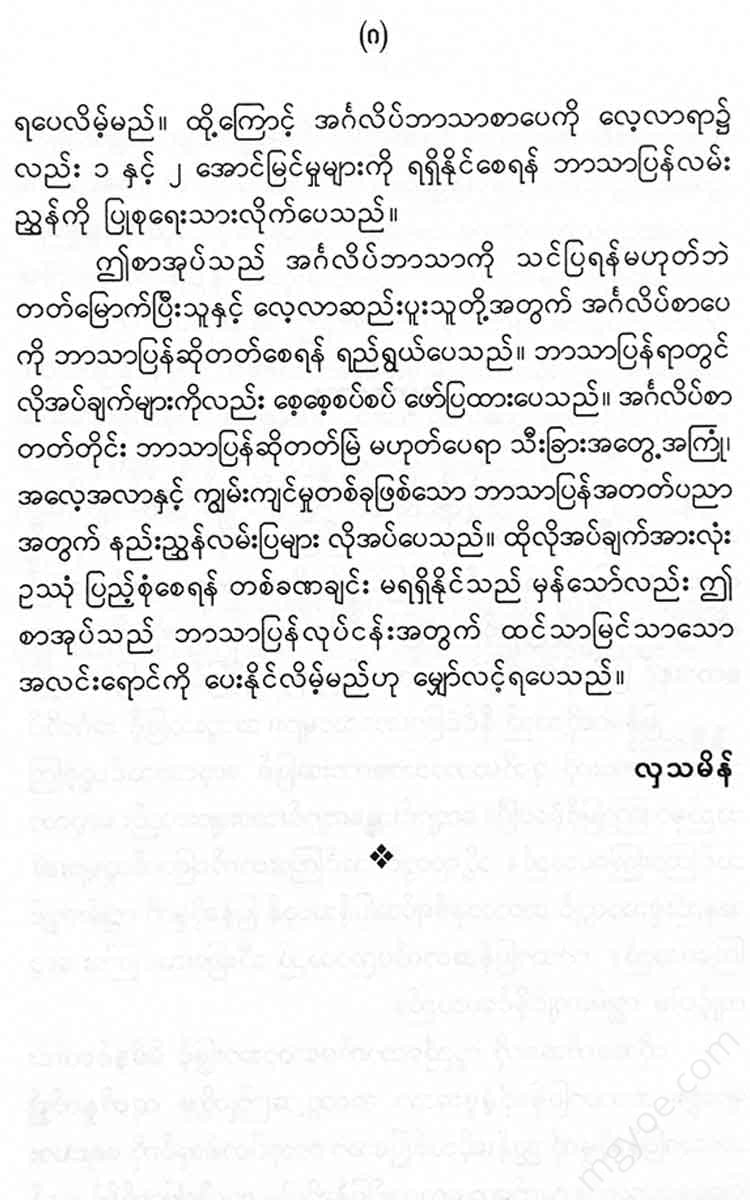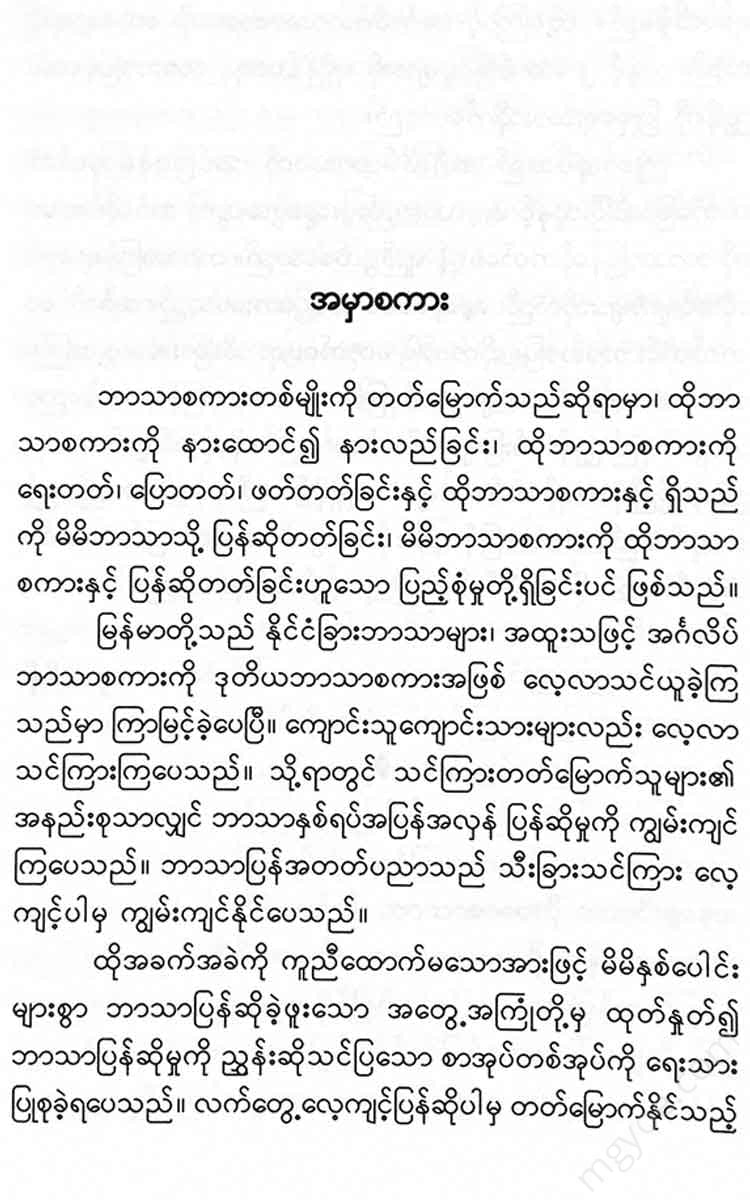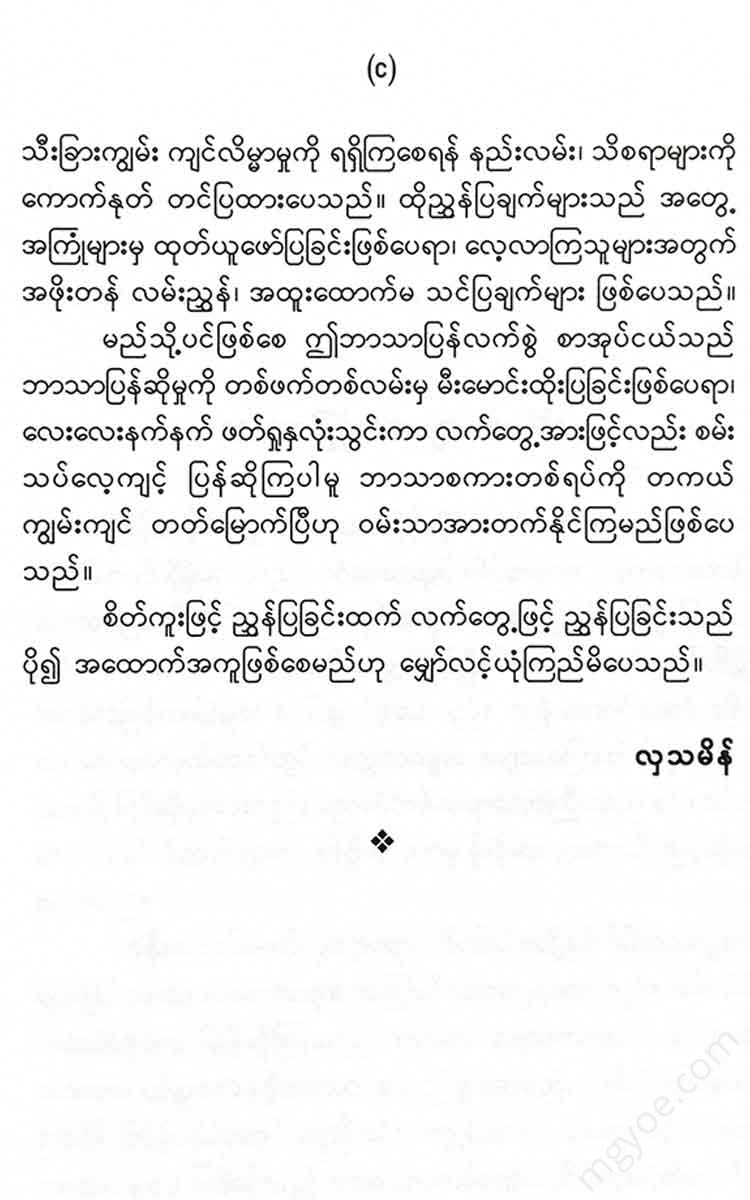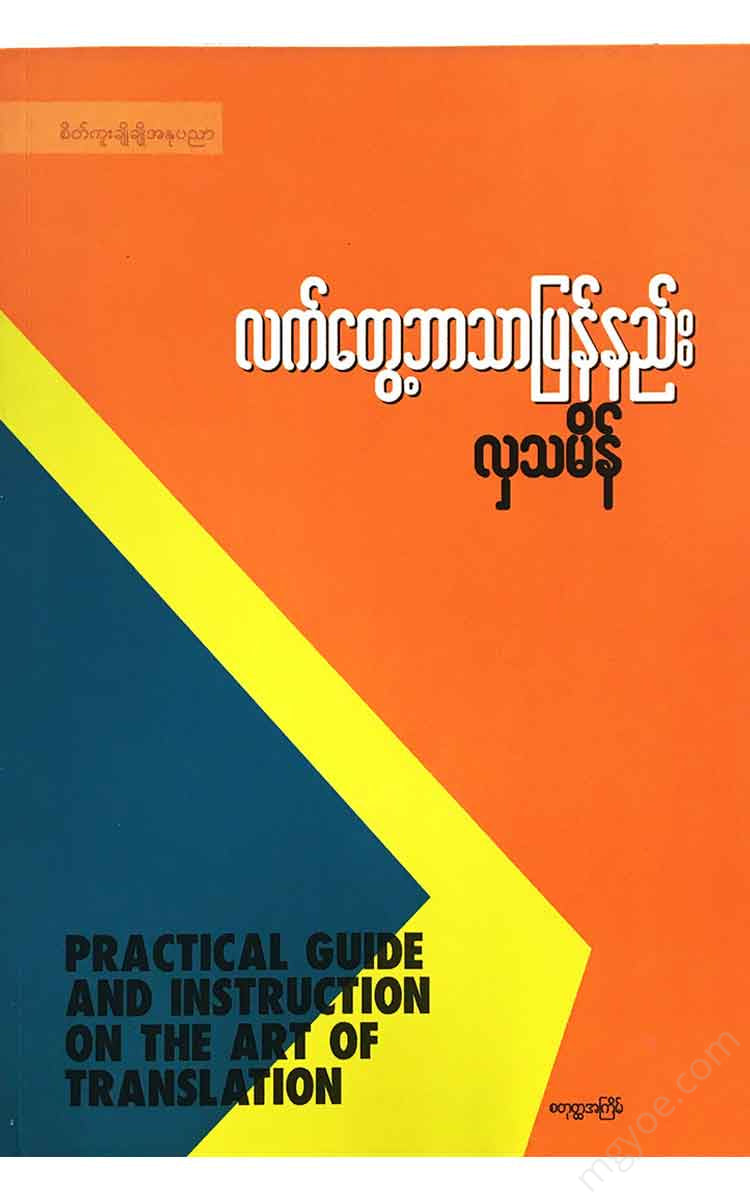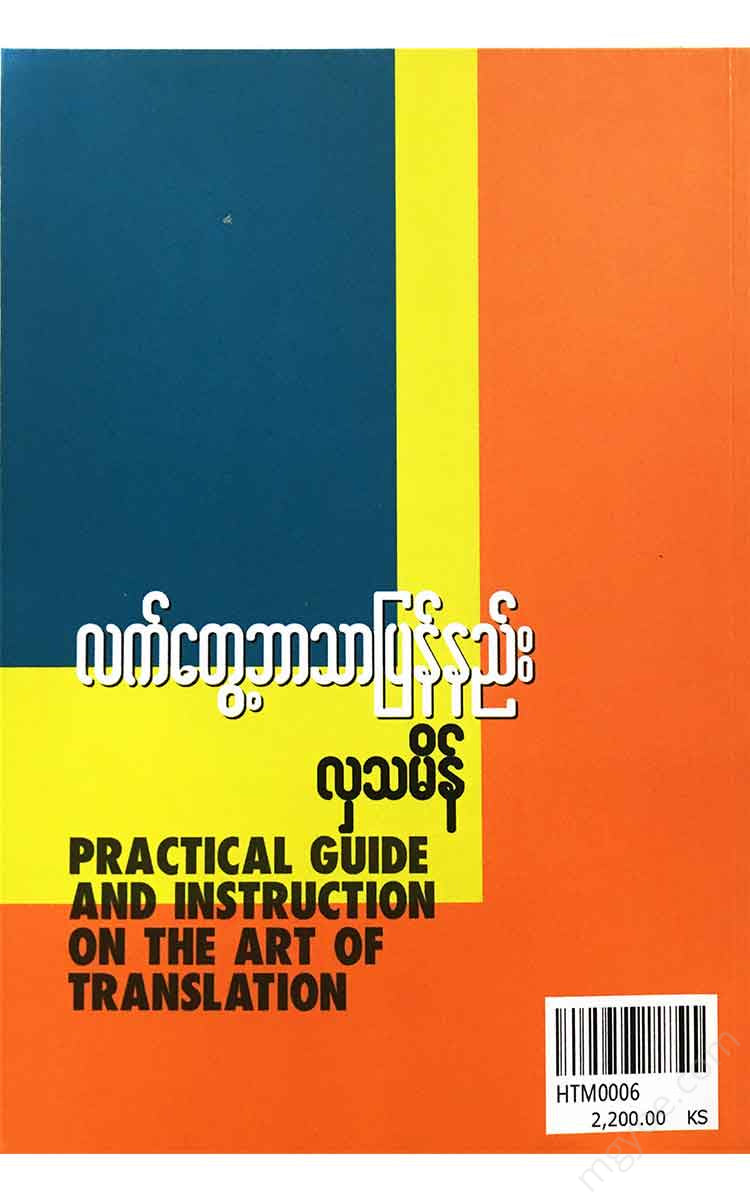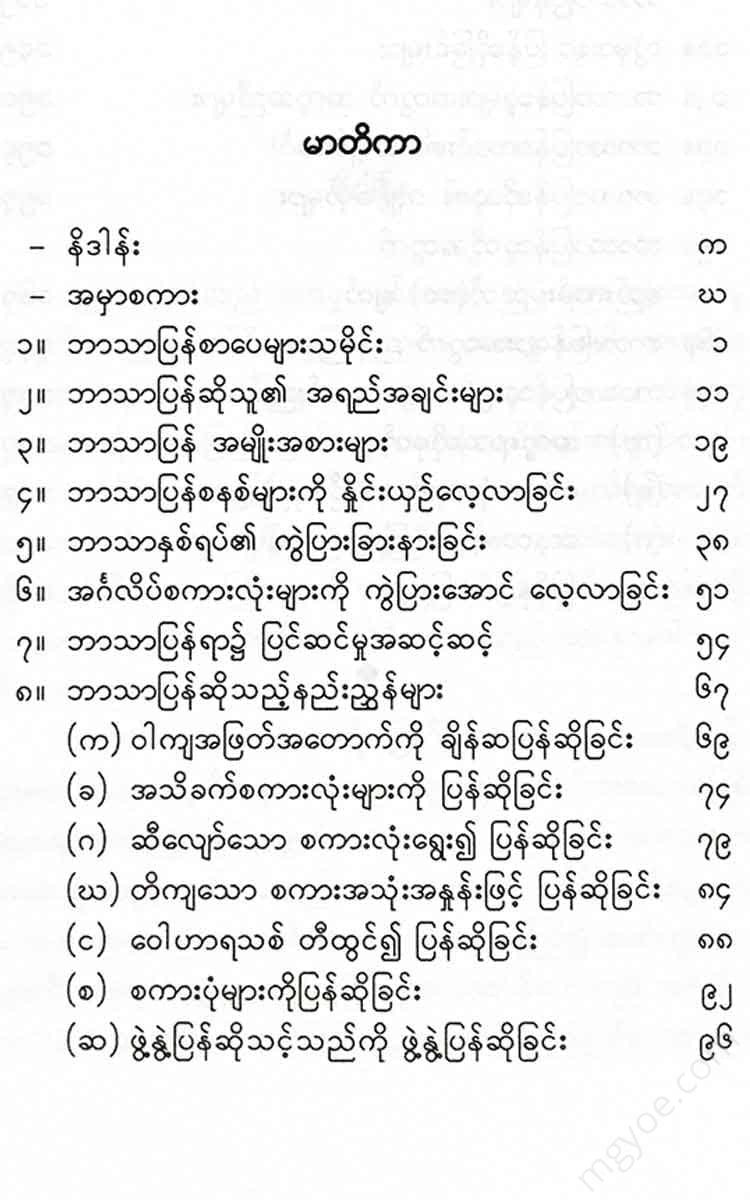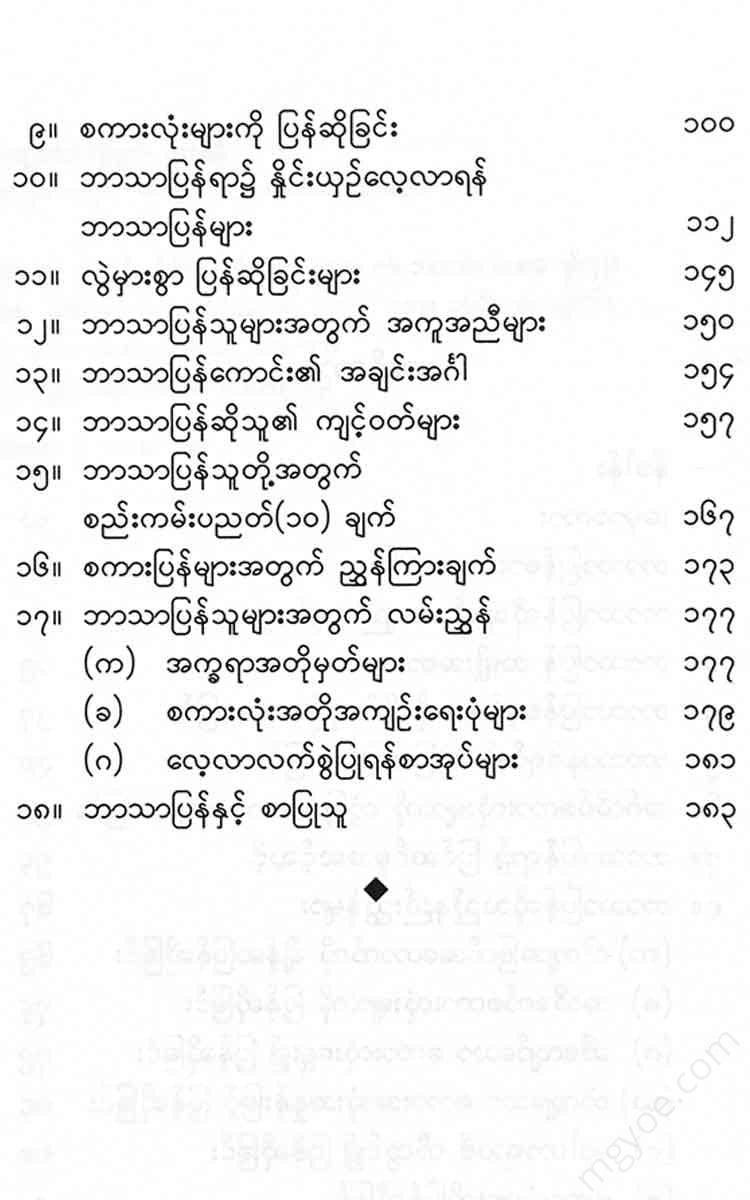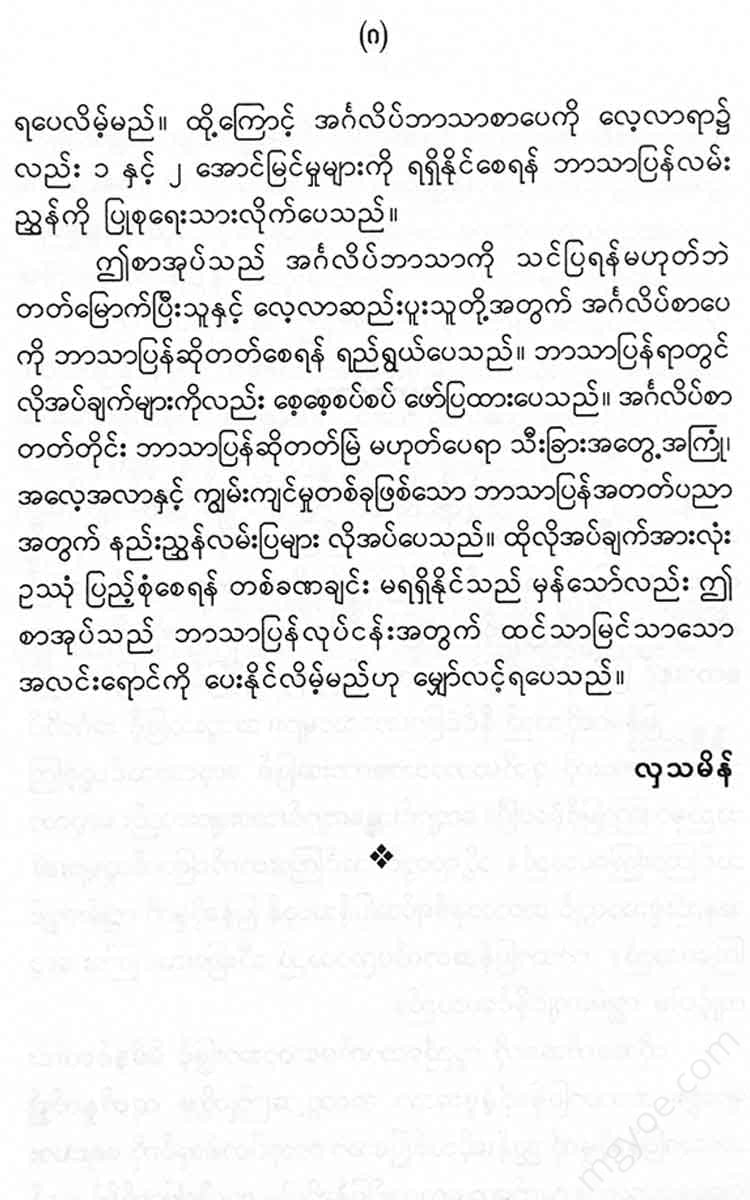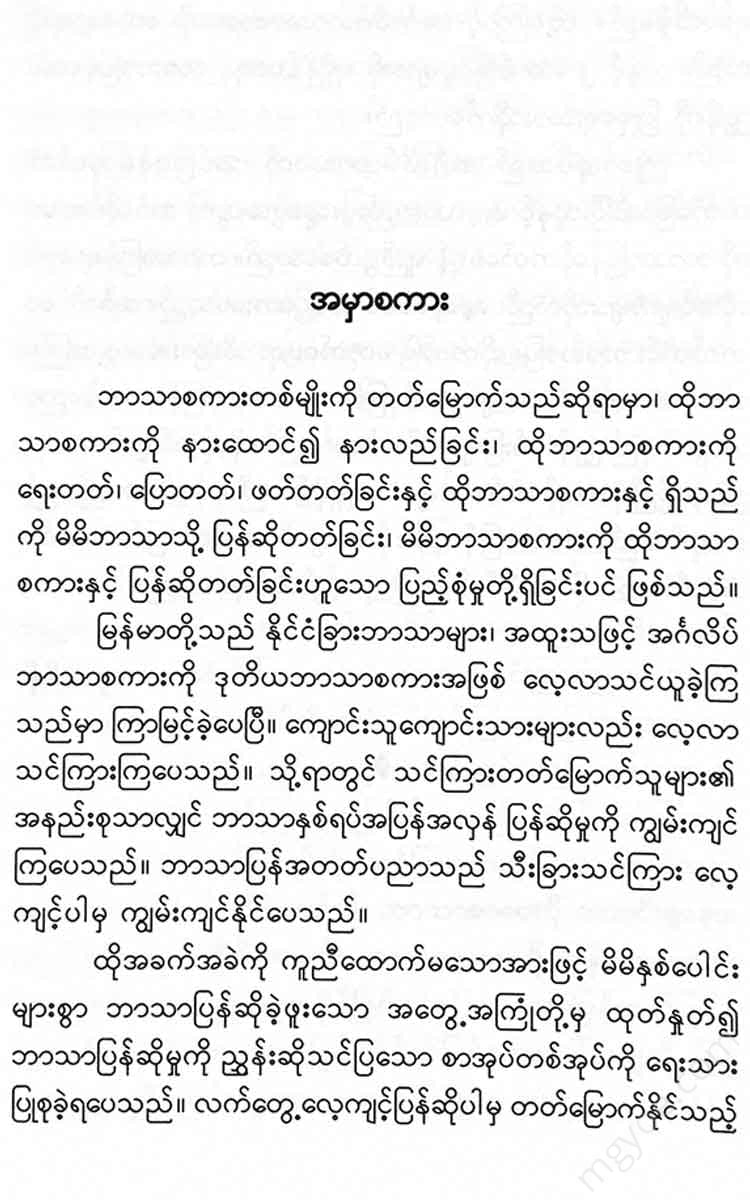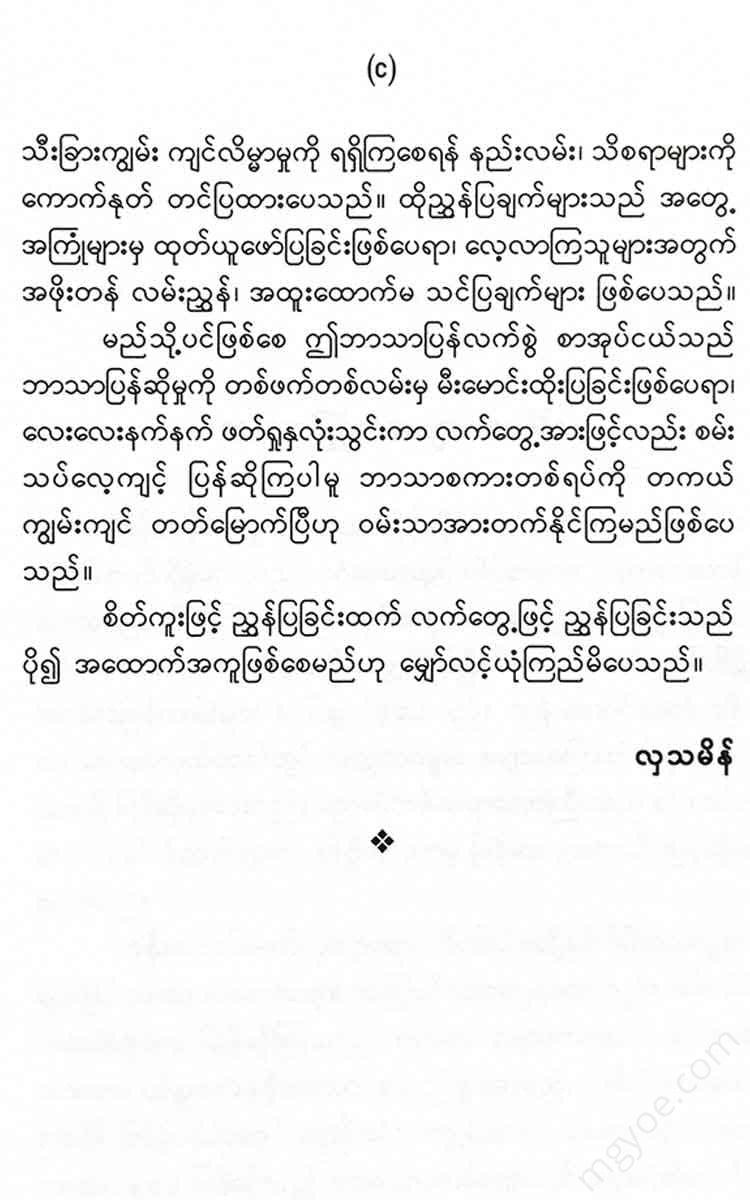စိတ်ကူးချိုချိုစာပေ
Hlasmaein - Practical translation method
Hlasmaein - Practical translation method
Couldn't load pickup availability
History of translated literature
The art of translation in Myanmar has existed since ancient times. During the Bagan period, Pali literature was translated into Burmese. Even in the Bagan stone inscriptions, expressions translated from Pali into Burmese can be found, and Pali translations of texts appeared from time to time. During the reign of the Konbaung era, many Sanskrit texts were translated into Burmese. Nyaungkan Sayadaw translated five hundred and fifty Nipaṭas from Pali into Burmese.
During the Konbaung period, with more contact with Europeans, the translated literature became richer. They were not only translated from English, but also from Romance languages, French, Hindustani, etc. The earliest documents found in Myanmar translated from European languages were translated from Roman (Italian).
Among the early Christian missionaries to arrive in Myanmar were Roman Catholic missionaries who arrived in Thanlyin in 1749. Father Carpani compiled a book of religious questions and answers based on the Roman Catholic canon. He also compiled a Burmese dictionary and published it at the Roman missionary press.
In 1776, the Italian priest Pacotto wrote the Epistle to the Corinthians, and in 1785, he compiled and published it in Rome under the title “A Letter to the World, Showing the Doctrine and Practice of the Christian Religion.” In 1776, he also printed the Myanmar Board Book. In the 19th century, Father Di Amato translated the Old Testament into Burmese. However, in 1842, it was destroyed in the fire of Chanthasara and was not printed. Later, Father De Britto is said to have compiled a Burmese-Italian Pali dictionary. Until then, translations had been translations from the Roman language.
Around this time, Burmese-English translations of the Bible were also appearing. This was because American missionary Adoniram Judson Judson arrived in Burma on July 13, 1813, learned Burmese, and compiled an English-Burmese dictionary in 1820. He also translated the New Testament from English into Burmese, which was completed in 1823 and published in 1832 and 1837. He continued to translate the Old Testament, which was completed in 1834 and published in 1838. The entire Bible was printed again in 1840. Judson also translated other religious books. The English-Burmese dictionary was first printed in Calcutta, India, in 1826.
In 1841, Prince Makkhara (King Tharyawaddy's uncle) consulted with Captain Charles Lane to compile an English-Burmese dictionary, which was printed in Calcutta in 1841. Then, in 1874, the Indian Covenant Act enacted by the British government in Lower Burma was translated into Burmese. Around this time, in Upper Burma, U Pho Hlaing, the Secretary of State, translated a book of world chemistry from French religious chemistry books called the Chemistry of the Cycle.
In 1873, The Fables of Aesop were translated from the original Greek into Burmese by Shwe Too Sandys.
After the British annexed Burma on January 1, 1886, English was made the official language, and more English literature was studied. After that, school subjects, legal texts, academic texts, and Christian religious texts were translated.
In 1889, Maung Pho Khin, also known as Mohammed Shamsuddin, translated a novel from Hindustani into Burmese titled The History of Hatintarye, which was edited by Satyimut Uku. In 1898, Ismail Haji Aryanana and a group of companions translated a Muslim religious novel from Hindustani, titled Maung La Ali Sakhavut Nama, Maung La Ali Thakin Nayab.
In 1899, Stephen M.MC KERTICH of Thaton translated the novel TALES FROM CHAMBERS' AND OTHERS into Burmese and published it at the Hanthawaddy Printing Press. In 1898, Mammad Kasin and Mammad Yusup translated the Bagh 0 Bahar into Burmese. Around the same time in 1899, the original Arabic and Arabian Nights, The Tales of the Thousand and One Nights, were translated into Burmese by Dr. Shaik Abdul Rehman, LRCP, LRCS (Edin), LFPS (Glas). This book is not a simple translation, but a book written in Myanmar.
In 1901, James Hla Kyaw published a novel titled “Maung Yin Maung Ma Ma Ma” based on the French novel The Count of Monte Cristo by Alexandre Dumas through an English translation. The novel did not mention the word “Mie”. However, the precise translation method can be said to be the beginning of the era of the technology of translating Mie.
In 1910, U Shwe Zan Aung translated Jevon's book Logic into Burmese under the title "Tak Kyin". This book was not a simple translation but a book written in Myanmar.
Then, in 1912, Mandalay Maung Khin Maung (Latiya Pandita U Maung Gyi) wrote a novel called “Maung Soka’s Dream Room” based on John Bunyan’s The Pilgrims’ Progress. He also wrote “Maung Gyi Maung Nge” based on Shakespeare’s The Comedy of Errors. At that time, people did not use the direct translation method, but read and memorized it and rewrote it as Burmese novels.
Then, Shwe U Daung wrote the Sherlock Holmes stories by Sir Arthur Conan Doyle under the name “Detective Maung San Shya”, the East Lynne story by Mrs. Henry Wood under the name “Yadana Pon”, the She ogla by Sir Rider Haggard under the names “Rupanandi, Rupankalyanee”, and the Moon Stone story by Wilkie Collins under the name “Thein Htike Nila”.
Master P. Morning also wrote a novel based on Just A Girl under the title "Nerei Ri" and a novel based on Joseph Hocking's novel Facing Fearful Odds under the title "Solo". He also accurately translated Alexandre Dumas's novel The Three Musketeers under the title "The Three Musketeers".
Saya Zeya also wrote a novel titled “Myat Lay Shwe Shand Bo” based on The Scarlet Pimpernel, and a novel titled “Shwe Lham Bo” based on Beau Brocade.
Dagon Khin Khin Lay also wrote the novel "The High One" based on Wuthering Height, the novel "The Life of a Man" based on A Pair of Blue Eyes, and the novel "The Low One" based on London Bridge.
These books were so well-written that it was impossible to know whether they were translated or copied. Later, the Myanmar Education Society, under the supervision of J.S. Furnival and U Pe Maung Tin, published the translated books.
